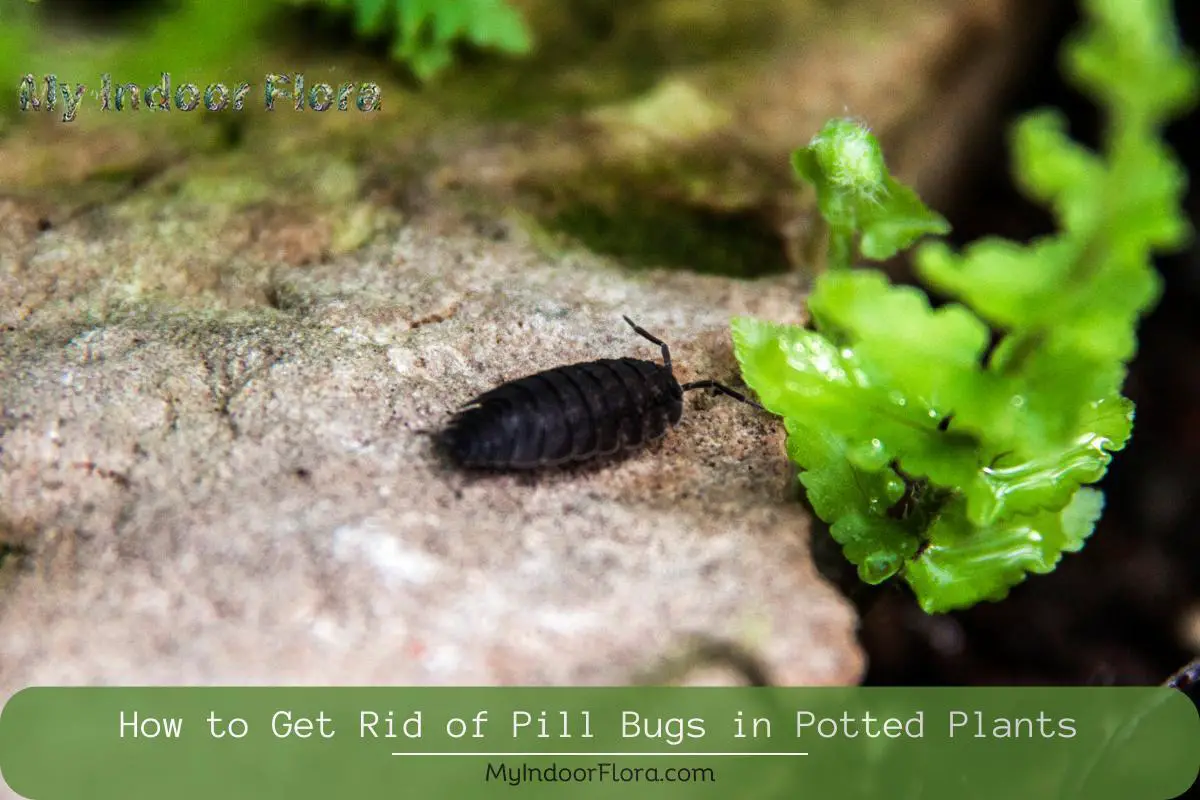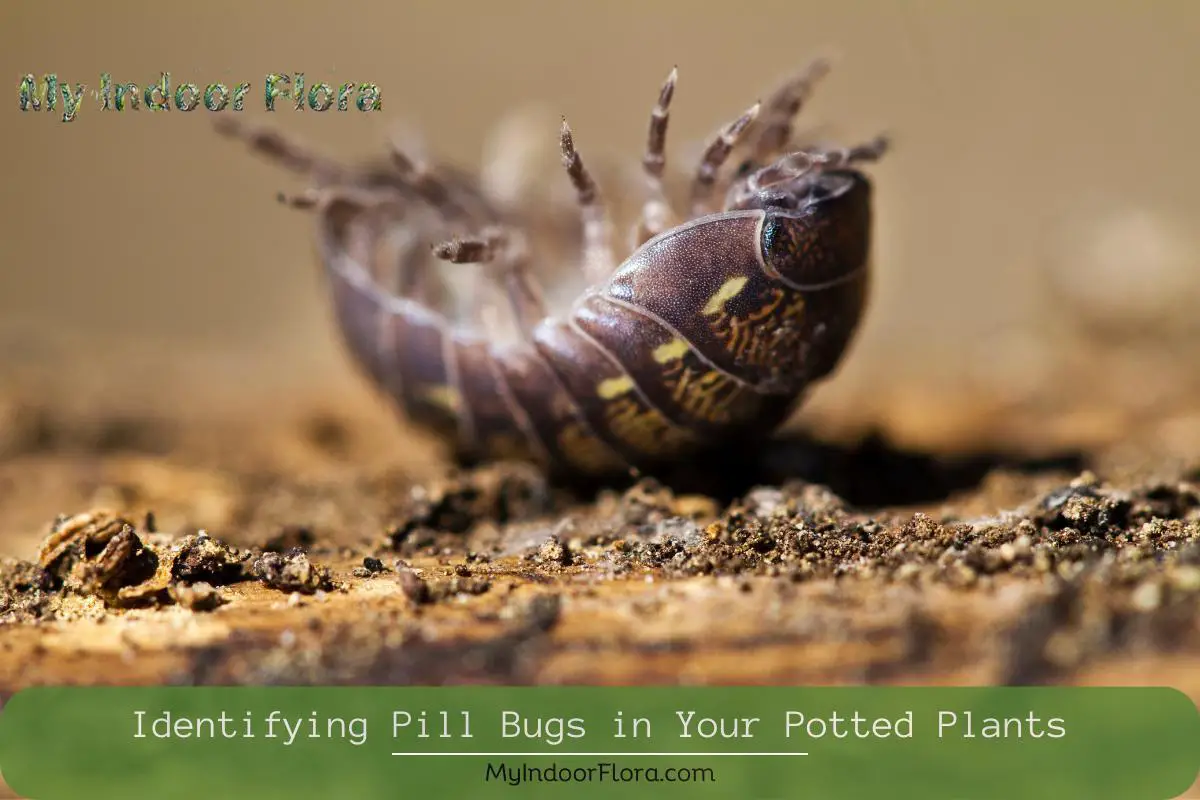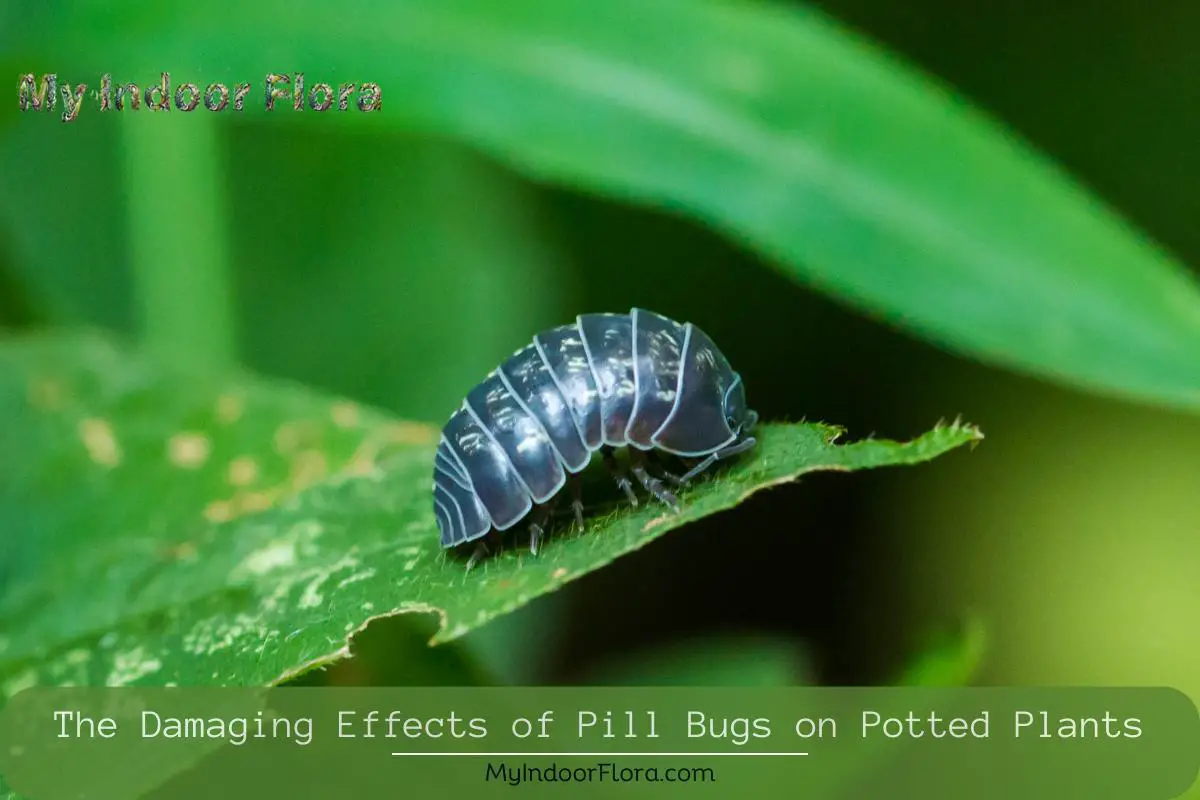Pill bugs, scientifically known as Armadillidium vulgare, are small terrestrial crustaceans familiar to gardeners worldwide. Often found under logs, stones, or in damp areas, they help recycle organic material, contributing significantly to soil health. However, in potted plants, an overpopulation of these creatures can spell disaster. According to research published in the Journal of Economic Entomology, when these bugs transition from feeding on decomposing matter to live plants, it can lead to decreased photosynthetic efficiency and overall plant health.
How does one rid their cherished potted plants of these pests? A multi-pronged approach is best, starting with early detection and followed by a combination of natural and chemical treatment methods. Furthermore, adopting preventive measures can halt a pill bug infestation before it becomes an overwhelming problem.
In the ensuing article, we will comprehensively guide you through the process of identifying a pill bug infestation, understanding its effects, and employing effective methods to control it. With in-depth discussions on each step and insights from scientific research, this article aims to arm you with the knowledge you need to protect your potted plants and ensure their thriving growth.

Identifying Pill Bugs in Your Potted Plants
To effectively mitigate a pest problem, accurate identification of the pest is critical. Pill bugs, often endearingly referred to as “roly-polies,” can be characterized by several distinguishing features.
Physical Characteristics:
Pill bugs are not insects but terrestrial crustaceans, more closely related to shrimp and lobsters than to any insect. They are usually grey in color, but can also be brown or black. A typical pill bug measures approximately 1/4 to 1/2 inch in length. Its body is made up of seven overlapping segments, each of which has a pair of legs. This gives them a unique, armored appearance, earning them another nickname, “armadillidiidae,” derived from their semblance to the armored-plated mammal, the armadillo.
Behavioral Traits:
One of the most telling behaviors of pill bugs is their ability to roll into a tight ball when they feel threatened, hence their popular name “roly-polies”. They’re also nocturnal creatures, becoming most active during the night.
Signs of Infestation:
Pill bugs leave behind tell-tale signs of their presence, like their frass or excrement, which appears as tiny pellets. They may also be seen clustering under pots or garden debris. Pill bugs are attracted to moisture and are often found in damp, dark areas of the garden. If you notice your soil constantly damp or see visible damage to young plants and their roots, you may have a pill bug problem.

According to Dr. Whitney Cranshaw, an entomologist at Colorado State University, the mere presence of these bugs can indicate overly moist conditions that might be detrimental to your plants.
Why Pill Bugs are Attracted to Potted Plants?
Pill bugs play a valuable role in the ecosystem, breaking down decaying organic material and returning essential nutrients to the soil. However, the very traits that make potted plants appealing to gardeners also make them an attractive environment for pill bugs. Let’s explore these traits in more depth.
Moisture Content
A potted plant often has higher moisture content than a garden bed, especially if it’s being watered frequently or doesn’t have adequate drainage. Pill bugs are moisture-loving creatures, so the damp soil of a potted plant offers an ideal environment for them to thrive.
Organic Matter
Pill bugs feed on decaying plant matter, and potted plants often provide plenty of this. When organic mulch or compost is used as a potting medium or supplement, it can inadvertently attract pill bugs.
Shelter
The confined space in a pot also offers the perfect shelter for pill bugs. They like hiding in dark, moist places during the day, so the underside of a pot or the crevices between the pot and the soil surface can be an attractive hiding spot for them.
Lack of Natural Predators
In a natural ecosystem, pill bugs have many predators, such as birds, toads, spiders, and some types of insects. These predators help control the pill bug population. However, in a home or indoor garden, these natural predators might be absent, leading to a rapid increase in the number of pill bugs.
Accessibility
Pill bugs are quite mobile and can migrate from one spot to another in search of food and suitable living conditions. Therefore, potted plants that are easily accessible, such as those on the ground level or those close to infested areas, are more likely to be invaded by pill bugs.
Plant Health:
Lastly, the health of your plant can influence the level of pill bug attraction. A healthy plant can often resist pill bug attacks. However, a weakened or stressed plant, or a plant with tender, new growth, can be a prime target for these pests.

An effective strategy against pill bugs involves altering these conditions to make your potted plants less inviting to these pests. Whether it’s adjusting your watering habits, changing your potting medium, or improving your plant’s health, several measures can help deter pill bugs from setting up residence in your potted plants.
The Damaging Effects of Pill Bugs on Potted Plants
While pill bugs are largely beneficial for garden soil due to their role in organic matter decomposition, they can become problematic when they infest potted plants. This shift from beneficial to destructive is primarily due to their opportunistic feeding behavior. Here are the ways pill bugs can impact the health of your potted plants:
- Root Damage: Pill bugs can directly damage the plant by feeding on its roots, especially the young, tender roots of seedlings or newly propagated plants. Root damage affects the plant’s ability to uptake water and nutrients, leading to a gradual decline in health and vigor.
- Stem Damage: Pill bugs can also gnaw at the base of plant stems, causing them to weaken or even break off. This damage is particularly harmful to young seedlings, which may be unable to recover from such an injury.
- Foliage Feeding: Although less common, some instances of pill bugs feeding on leaves and other above-ground parts of plants have been reported. They tend to prefer tender, new growth and can cause significant defoliation in severe infestations.
- Increased Stress: The stress of a pill bug infestation can weaken a plant, making it more susceptible to disease and other pests. This can set off a vicious cycle of declining plant health.

A study in the Journal of Integrated Pest Management found that pill bug feeding can reduce a plant’s photosynthetic capacity by up to 14%, directly impacting its ability to grow and thrive. Thus, it’s essential to tackle a pill bug infestation promptly to minimize potential damage.
Immediate Actions to Take When Pill Bugs are Discovered in Potted Plants
Discovering a pill bug infestation in your potted plants can be alarming, but there are immediate actions you can take to begin addressing the problem.
- Isolation: First, isolate the infested pot from your other plants to prevent the pill bugs from spreading. Pill bugs move slowly, but they can still make their way to other pots, especially if they’re close by.
- Reduce Moisture: Pill bugs thrive in moist environments. If the soil is damp, let it dry out a bit before watering again. Also, ensure your pot has adequate drainage to avoid waterlogging, a condition that attracts pill bugs.
- Remove Organic Matter: If you have used organic matter like compost or mulch in your potting soil, consider removing it as much as possible without disturbing the plant. This will reduce the food source for the pill bugs.
- Hand Removal: If the infestation isn’t too large, consider hand removal. This can be done at night when pill bugs are most active. Use a torch or headlamp to spot them and then pick them off and dispose of them far away from your plants.
- Non-Chemical Treatments: There are several non-chemical options to consider, such as diatomaceous earth or traps. Diatomaceous earth, a powder made from the fossilized remains of tiny aquatic organisms, can be sprinkled around the pot. It’s harmless to plants but deadly to small bugs. Traps, such as a piece of melon or potato, can be used to lure the pill bugs away from the plant.
How Can You Prevent Pill Bugs from Infesting Your Potted Plants?
Preventing pill bugs from infesting your potted plants is a multi-faceted approach that combines several strategies. An effective prevention program focuses on making your potted plants less attractive to pill bugs by managing the environmental conditions and by being vigilant. Here’s how you can achieve that:
Proper Watering Practices
Since pill bugs are attracted to moist conditions, managing the water content in your pots is crucial. Make sure you’re not overwatering your plants. Use a moisture meter if you’re unsure about when to water. Also, ensure your pots have good drainage to prevent waterlogging. If you’re using saucers or trays underneath your pots, empty them regularly to prevent standing water, which can attract pill bugs.
Quality Potting Mix
Using a well-draining potting mix can help maintain the right moisture balance. It also reduces the likelihood of having excessive decaying organic matter that can attract pill bugs. Ensure the potting mix you choose is suitable for the specific needs of your plants and promotes healthy growth.
Regular Cleaning
Keep the area around your pots clean. Remove fallen leaves, dead plants, and other organic debris that can attract pill bugs. Regularly inspect and clean the undersides of your pots as well, as pill bugs often hide in these areas.
Strategic Positioning
If you have multiple pots, consider spacing them out. This way, even if one pot becomes infested, the pill bugs won’t be able to easily move to the other pots. Similarly, keep your pots away from walls or fences, as these structures often harbor pill bugs and other pests.
Use of Diatomaceous Earth
Diatomaceous earth, a type of powder made from fossilized aquatic organisms, can be sprinkled around your pots. It’s harmless to plants and humans but can be lethal to pill bugs and other small crawling pests.
Use of Barriers
Physical barriers around your pots can prevent pill bugs from getting to your plants. Copper tape, for instance, is a common deterrent. The tape delivers a small electric charge when a pill bug comes into contact with it, deterring them from crossing the barrier.
Introducing Natural Predators
In an outdoor setting, you can encourage the presence of natural predators such as birds, toads, and certain insects by creating a friendly habitat for them. This will help in naturally controlling the pill bug population.
Regular Inspection
Regularly inspect your pots, especially during early mornings or late evenings when pill bugs are most active. Look out for signs of pill bugs and take immediate action if you spot them.
Preventing pill bugs from infesting your potted plants requires a consistent and comprehensive approach. By focusing on the conditions that attract pill bugs and being proactive in your prevention measures, you can significantly reduce the risk of an infestation.
How Can You Eliminate Pill Bugs Once They’ve Infested Your Potted Plants?
Even with the best preventative measures, pill bug infestations can still occur. But don’t worry, there are various strategies to tackle an existing infestation. It’s important to remember that pill bugs play a beneficial role in the ecosystem by decomposing organic matter, so our goal is to control their population rather than complete eradication. Here are some effective strategies:
Manual Removal
If the infestation is not extensive, you can manually remove the pill bugs. The best time to do this is in the early morning or night when they are most active. You can pick them up and relocate them far from your potted plants. It can be time-consuming but is an eco-friendly option.
Drying Out the Soil
Pill bugs need moist conditions to survive. Letting the soil dry out between watering can discourage them. Be careful not to stress your plants with this strategy though. Only use this method if it aligns with the watering needs of your specific plants.
Use of Diatomaceous Earth
As mentioned earlier, diatomaceous earth is lethal to pill bugs. Sprinkling it around your infested pots can help control the pill bug population. Make sure to use food-grade diatomaceous earth and reapply after watering or rain.
Using Traps
You can also use simple traps to capture pill bugs. For instance, placing a piece of melon or potato on the soil surface can attract pill bugs. You can then remove these “bait stations” along with the pill bugs that have gathered on them.
Use of Insecticides
If the infestation is severe, you might need to use insecticides. Products containing spinosad, an organic compound, can be effective. Be sure to follow the manufacturer’s instructions for application and safety precautions.
Introducing Predatory Insects
Some insects, such as predatory mites and ground beetles, feed on pill bugs. Introducing these beneficial insects can provide a natural control method. However, this strategy is typically more suited for outdoor gardens.
Repotting the Plants
If the infestation is severe and other strategies are not working, you might need to repot the plants. Carefully remove the plant from the pot, clean the roots, and replant it in fresh, sterile potting mix.
Remember, managing a pill bug infestation is not about completely eliminating these creatures but about controlling their population to a level where they do not harm your plants. Always try the least harmful methods first and resort to chemical control only when necessary.
Chemical Treatment Options for Pill Bug Infestations
In cases where non-chemical methods prove inadequate, or if the pill bug infestation is too extensive, chemical treatments might be necessary. Here are some options to consider:
- Insecticidal Soaps: Insecticidal soaps work by disrupting the cell membranes of the pill bugs, causing them to dehydrate and die. These soaps are generally safe for plants but should be applied early in the morning or late in the evening to avoid sunburn on your plants.
- Pyrethrin-Based Insecticides: Derived from chrysanthemum flowers, pyrethrins are a class of natural insecticides that are effective against a wide range of pests, including pill bugs. Pyrethrins disrupt the nervous system of the bugs upon contact. They break down quickly in the environment, minimizing their impact on non-target organisms.
- Spinosad: Spinosad is a naturally occurring substance made by a soil bacterium that can be toxic to insects. It works by affecting the insect’s nervous system, leading to paralysis and death. Apply Spinosad to the soil and leaves of the infested plant, ensuring you follow the manufacturer’s instructions.
Remember to always use chemical treatments responsibly, adhering to the manufacturer’s instructions to minimize harm to non-target organisms. Rotate different types of insecticides to prevent the pill bugs from developing resistance.
Routine Monitoring and Maintenance to Keep Pill Bugs at Bay
Consistent monitoring and routine maintenance can prevent minor pill bug sightings from escalating into major infestations. Here are some measures you can take:
- Regular Inspections: Regularly check your potted plants for signs of pill bugs, paying close attention to the soil, the undersides of pots, and any cracks or crevices. Nighttime inspections can be particularly effective since pill bugs are nocturnal.
- Maintain Proper Moisture Levels: Overwatering is one of the main factors that attract pill bugs. Implement a watering schedule that allows the soil to dry out between waterings and ensure your pots have good drainage.
- Clean Up Debris: Regularly clean up fallen leaves and other plant debris from around your potted plants. Such material can provide food and shelter for pill bugs, encouraging their presence.
- Rotate Pots Regularly: Regularly rotating your pots can disrupt pill bug colonies and expose them to predators. It also allows you to inspect the undersides of pots, a favorite hiding spot for pill bugs.
When to Seek Professional Help for Pill Bug Infestations
If your pill bug infestation is widespread or your efforts to control it have been unsuccessful, it may be time to call in professional pest control services. Here are some signs that you might need professional help:
- Extensive Plant Damage: If numerous plants are showing signs of damage or stress despite your control efforts, professional intervention might be necessary.
- Recurring Infestations: If you’ve dealt with multiple infestations in a short period, it could indicate a larger problem that requires a professional’s expertise.
- Lack of Success with DIY Treatments: If DIY methods, including both non-chemical and chemical treatments, have failed to curb the pill bug population, professionals can provide more potent solutions.
Professional pest control services can identify the source of the problem, implement effective treatment strategies, and provide advice for preventing future infestations. However, professional services should be considered as a last resort, given the potential impact of potent chemical treatments on non-target organisms and the environment.
Conclusion
Controlling pill bug infestations in potted plants can be a challenge, but with the right knowledge and strategies, it’s entirely manageable. By identifying the problem early, taking immediate action, and using the appropriate treatment methods, you can protect your potted plants from these pesky pests.
Remember, consistent care and attention are crucial in maintaining a healthy, vibrant garden. Your plants will thank you for it!
